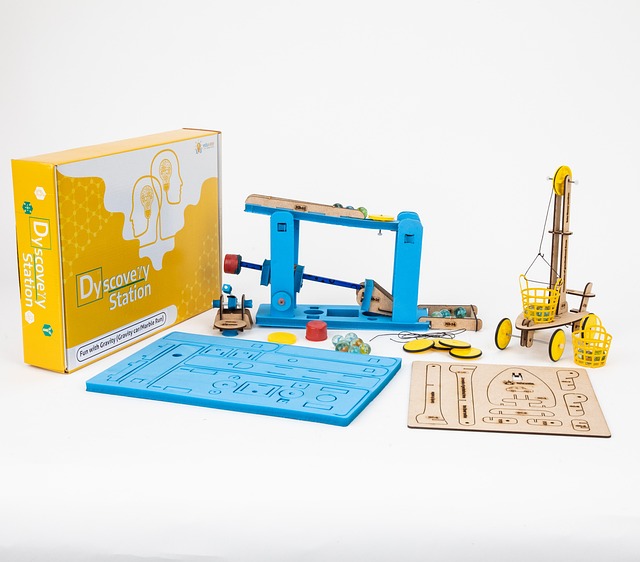
Introduction
Have you found that if you suggest an activity to your PDA child they reject it immediately? Do you wish you could introduce them to some new things but don’t know how to go about it? Strewing could be a useful tool.
What is strewing?
Strewing means to intentionally plant items and ideas in places where your child can see or hear them. Strewing is “about giving children the opportunity to discover something new and expanding their world. It may be expanding only ever-so-slightly or it may turn into a huge jumping off place“. It is thought that the term ‘strewing’ was coined by Sandra Dodd in the 1990s.
There are 3 types of strewing that I use:
Strewing Objects
This is when you leave an object lying around – it could be a book that is opened to an interesting page and left on the sofa, a fidget toy that is left in their bedroom or a science kit left on the dining table. The key with strewing is to hold it lightly. The danger is that you spend a lot of time, money and effort for the perfect thing to entice your child of a screen or to get them to broaden out from their special interest.
Strewing won’t work if you put pressure on it. The idea is that you making something available to your child that they may or may not be interested in. You are not manipulating them to comply with you. Offer something small that you don’t mind if they accept or reject, and see what happens. As Sue Patterson says strewing isn’t ““bait” to get kids to do what we want them to do, its an invitation that may or may not be taken up.
Strewing Activities
The easiest way to strew an activity is to start doing it yourself. Start watching a YouTube video on your phone when your child is close by. Get involved with a craft or sport activity and see if they join in. If you have another child you could start playing the game with them and see if your PDA-er wants to get involved. Just be warned that your PDA child needs to win, and will change the rules and cheat to make sure that they do!
Strewing Ideas
You may want to strew a simple idea like going to watch a film or a more complex concept such as tools for self-regulation. Either way you talk about the idea aloud to someone else or indirectly to them. An example of this would be saying to my husband, ‘I’ve heard there is a light show at Rococo Gardens this year, it sounds amazing’. Or if I’m trying to help a child understand sensory regulation I may say something like – I’m a bit stressed from my drive here, my heart is beating fast and my shoulders are tense, I’m just going to take a few deep breaths’. In both of these examples, I’m not putting any demands on the child but I’m introducing them to ideas and they can ask me more about these topics if they wish to.
Why does strewing work for demand avoidant children?
When strewing is done properly it is done without any pressure or expectation. True strewing has ‘no strings attached’. The adult is approaching strewing with an attitude of curiosity and uses their child’s response as an opportunity to get to know their child more. Deb Rossing describes strewing as “bringing in things you think might bring joy into the household and then letting them take on their own life wherever that leads.” It might lead to a lifelong interest, to 5 minutes of fun or lead nowhere at all. You just don’t know until you try. And that’s the beauty of strewing.
How I use strewing as a parent and an Occupational Therapist
Occupational Therapy Assessments
Traditionally Occupational Therapists use set activities during an assessment such as handwriting, catching a ball, threading beads and doing jigsaw puzzles to assess fine motor, gross motor and visual perceptual skills. They may use standardised assessments or have a clear idea of the tasks they want the child or young person to do. If they are trying to make the assessment autism friendly they may communicate the structure of the session at the start. However, instead of helping, doing this will only produce resistance in the child who is demand avoidant.
When I’m doing an assessment with a demand avoidant child I try to base it around activities the child enjoys doing. I might strew the environment – I met one young person in a bowling alley, and went to the park with another child. I knew that the young person enjoyed playing pool but the bowling alley also contained a games arcade, ice-hockey and bowling lanes so we tried these activities too.
I’m able to assess many of the child’s strengths and difficulties through observing these activities. I also bring a bag of activities with me and leave it open or invite the child to look through and engage with what they want to. I don’t have any set activities and I don’t make notes or write anything down in front of the child.
Therapy Sessions
Following an assessment an Occupational Therapist will often give parents and teacher a programme of activities to do at home. These activities are intended to develop a child’s skills or to help them regulate. However, as we know that isn’t going to work for a demand avoidant child. Instead I make recommendations about how the environment can be adapted to support the PDA child. I also recommend techniques like strewing. I advise parents to leave items out that can promote skills or to talk about concepts such as neurodivergence, study skills or regulation when their child is in earshot. Any therapy sessions I do with a young person or child will be similarly low demand and I will strew objects, activities and ideas throughout.
Getting started with strewing – some tips
- Start off by leaving one object that you thing your child might be interested in somewhere visible. This can be something small from a pound store
- Watch a short video on a topic you think your child might be interested in when they are nearby. Whilst you are watching make comments such as ‘that’s cool’ or ‘I didn’t know that’.
- Let your child overhear you telling someone else about a place you have heard about – maybe a trampoline park, a museam or somewhere you think they may like to go
Strewing doesn’t always ‘work’ – your child may not be interested in what you are trying to strew. That’s fine. Try again another day. They may not be interested in that topic or activity or the timing may not be right.
Conclusion
Strewing is a no pressure way of introducing your PDA child to new things, new places, new activities and new ideas. It is as much an art as a science, and needs to be done with a no strings attached approach. Strewing is very simple but can be very effective, so why don’t you give it a go?
Resources
For more on strewing see:
